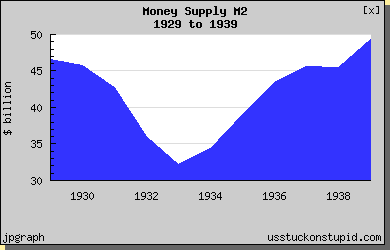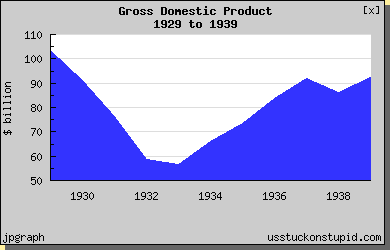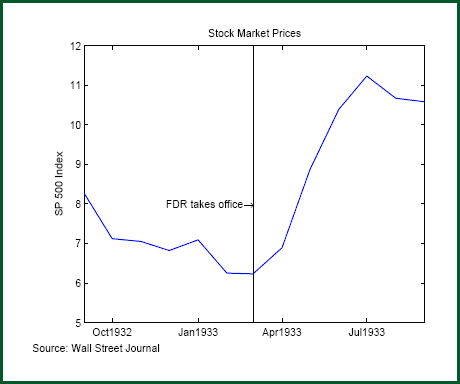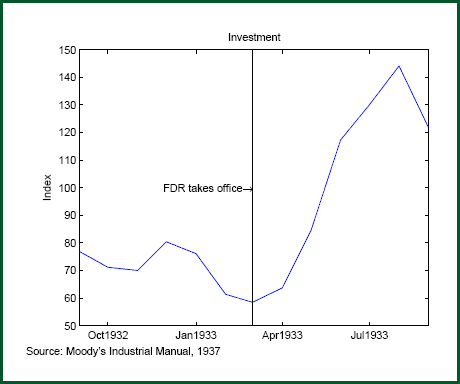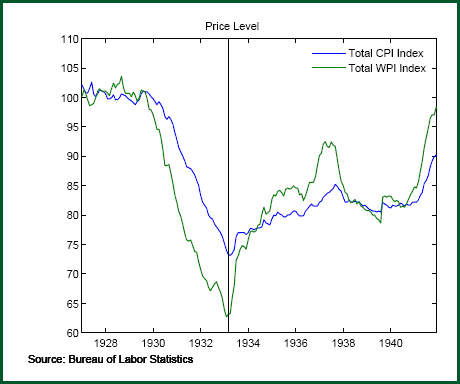¿Que es el PPT? ¿Que rol juega Goldman Sachs?: PARTE I
No es algo nuevo, aunque ha vuelto a los titulares de algunos especialistas "no políticamente correctos" que están alertando sobre la operatoria encubierta del gobierno y la reserva federal en los mercados, mediante casas de brokers importantes:
Una discución en la CNBC (el canal financiero mas importante de America) sobre el Plunge Protection Team:
Empecemos por definir que es el PPT y como nació:
Mapa que a partir de 2006 (cuando el mercado inmobiliario había tocado TECHO y dos meses antes del primer crack (abril-junio 2006) cambio cuando se discontinuo la publicación de M3 llamativamente:
Ahora observemos como operarían con un gráfico:
Quedan muchas dudas de la capacidad de "intervención", su peso sin dejar huellas, y mas importante aún, si es capaz de generar a gran escala burbujas. Hasta aquí sabemos que es un "sostenedor de tendencia" y llegado el caso "un jugador contratendencial".
Vamos a seguir con este tema, sobre todo por lo visto las ultimas semanas que alimentó aún mas las dudas sobre "la distribución" de las compras en el mercado. Y de como la atomización de los "5 grandes" en cuanto a "compras acumuladas de acciones" se definio decididamente en este ultimo rally comenzado el 9 de marzo a favor de la "niña consentida" de la Reserva y el Tesoro Americano, Goldman Sachs:

Una discución en la CNBC (el canal financiero mas importante de America) sobre el Plunge Protection Team:
Well, well, well … it’s early morning and a guest on CNBC’s Squawk Box blurted out in vociferous fashion about how The Working Group on Financial Markets, or the Plunge Protection Team, has been active in the S&P futures markets … most notably on October 10 and 24. He mentioned that late market action in which the S&P rose 100 points from low to high for no apparent reason, and that the US Government was in no mood to let the markets close for the weekend(s) in a near state of panic.Enlace al video
The guest, Scott Nations, President of Fortress Trading, refused to back down. Bet you won’t be seeing him back anytime soon.
Empecemos por definir que es el PPT y como nació:
the stock market crash in 1987, the government created something called the President's Working Group on Financial Markets. The group, which includes the Treasury secretary, Federal Reserve chairman, chairman of the Securities and Exchange Commission and chairman of the Commodity Futures Trading Commission, was formed to ensure the smooth operation of financial markets.Sabemos que toma forma en 1987, que esta formado por un grupo que encierra a las principales autoridades regulatorias de los mercados financieros y autoridades políticas y cuya misión es evitar "crack financieros".
Citing a Washington Post article, Carol Baum recently wrote about a 1997 article: "The Working Group's main goal, officials say, would be to keep the markets operating in the event of a sudden, stomach-churning plunge in stock prices -- and to prevent a panicky run on banks, brokerage firms and mutual funds...
For the past several years, we have seen repeated “out of the blue” short-covering rallies just about the time a decline seems to be gaining some momentum. Our suspicion has been that the “Working Group” established by law in 1988 to buy markets should declines get out of control has become far more interventionist than was originally intended under the law. This group has since been dubbed the Plunge Protection Team. There are no minutes of meetings, no recorded phone conversations, no reports of activities, no announcements of intentions. It is a secret group including the Chairman of the Federal Reserve, the Secretary of the Treasury, the Head of the SEC, and their surrogates which include some of the large Wall Street firms. The original objective was to prevent disastrous market crashes. Lately it seems, they buy markets when they decide markets need to be bought, including equity markets. Their main resource is the money the Fed prints. The money is injected into markets via the New York Fed’s Repo desk, which easily showed up in the M-3 numbers.Hablan de operaciones REPO(Repos are essentially secured, short-term lending by the Fed. On the day of the transaction, the Fed deposits money in a primary dealer’s reserve account, and receives the promised securities as collateral. When the transaction matures, the process unwinds: the Fed returns the collateral and charges the primary dealer’s reserve account for the principal and accrued interest. The term of the repo (the time between settlement and maturity) can vary from 1 day (called an overnight repo) to 65 days.), su efecto sobre el nivel 3 de los agregados monetarios ( derivado de la renovación de los prestamos de dinero contra activo)
Mapa que a partir de 2006 (cuando el mercado inmobiliario había tocado TECHO y dos meses antes del primer crack (abril-junio 2006) cambio cuando se discontinuo la publicación de M3 llamativamente:
This past November, the Fed announced with little comment and no palatable explanation that it would no longer report the M-3 number after March 2006. It is now almost March 2006. Without the useful resource of M-3, we need to find other tools to monitor when the PPT is likely to intervene, and kill shorts.Veamos ahora como entraría en funcionamiento el "equipo de trabajo de monitoreo":
For the PPT to be effective in driving markets higher, the potential for a sustained turnaround rally depends upon a high volume of open short interest. By measuring this short interest by the level of CBOE put options, we can gauge when markets are ripe for PPT intervention. The way it works is the PPT decides markets need intervention, a decline needs to be stopped, or the risks associated with political events that could be perceived by markets as highly negative and cause a decline, need to be prevented by a rally already in flight. To get that rally, the PPT’s key component — the Fed — lends money to surrogates who will take that fresh electronically printed cash and buy markets through some large unknown buyer’s account. That buying comes out of the blue at a time when short interest is high. The unexpected rally strikes blood, and fear overcomes those who were betting the market would drop. These shorts need to cover, need to buy the very stocks they had agreed to sell (without owning them) at today’s prices in anticipation they could buy them in the future at much lower prices and pocket the difference. Seeing those stocks rally above their committed selling price, the shorts are forced to buy — and buy they do. Thus, those most pessimistic about the equity market end up buying equities like mad, fueling the rally that the PPT started. Bingo, a huge turnaround rally is well underway, and sidelines money from Hedge Funds, Mutual funds and individuals rushes in to join in the buying madness for several days and weeks as the rally gathers a life of its own.Más claro imposible: Operan siguiendo el "nivel de vendedores" que es facil de identificar obervando el "interés abierto" (The total number of options and/or futures contracts that are not closed or delivered on a particular day) de las bases PUTS, específicamente del SP500 que es el mas operativo del mercado.
Ahora observemos como operarían con un gráfico:
Above, we have developed what we call a Plunge Protection Team Risk Indicator. This indicator is based upon the premise that the most effective PPT intervention requires an extreme Bearish sentiment as measured by short interest. This indicator measures short interest from the level of CBOE put options outstanding. It simply compares a 10 day moving average of CBOE puts with a 30 day moving average of CBOE puts. Whenever the ratio of the 10 Day to the 30 Day rises above 1.18, we are at great risk of a short covering rally of some sort, probably PPT induced. In other words, whenever the 10 Day MA is more than 18 percent above the 30 Day MA, if you are holding short-term puts, or a short position of some other form, you may want to think about getting out with whatever profits or losses you have.Hasta acá un análisis siempre especulativo de como actuaría el PPT en los mercados.
We have marked in red arrows those times over the past 18 months when the ratio exceeded 1.18. In each and every instance, at least a several day sharp rally developed. It does appear that in every instance, there was a day’s notice before the spike reversal higher took off. It’s sad we have to anticipate this central planning intervention into what used to be free markets, but if we can be prepared, then we can still trade both the ups and the downs profitably.
Quedan muchas dudas de la capacidad de "intervención", su peso sin dejar huellas, y mas importante aún, si es capaz de generar a gran escala burbujas. Hasta aquí sabemos que es un "sostenedor de tendencia" y llegado el caso "un jugador contratendencial".
Vamos a seguir con este tema, sobre todo por lo visto las ultimas semanas que alimentó aún mas las dudas sobre "la distribución" de las compras en el mercado. Y de como la atomización de los "5 grandes" en cuanto a "compras acumuladas de acciones" se definio decididamente en este ultimo rally comenzado el 9 de marzo a favor de la "niña consentida" de la Reserva y el Tesoro Americano, Goldman Sachs:







 7:17
7:17
 Mauro Mazza
, Posted in
Mauro Mazza
, Posted in


